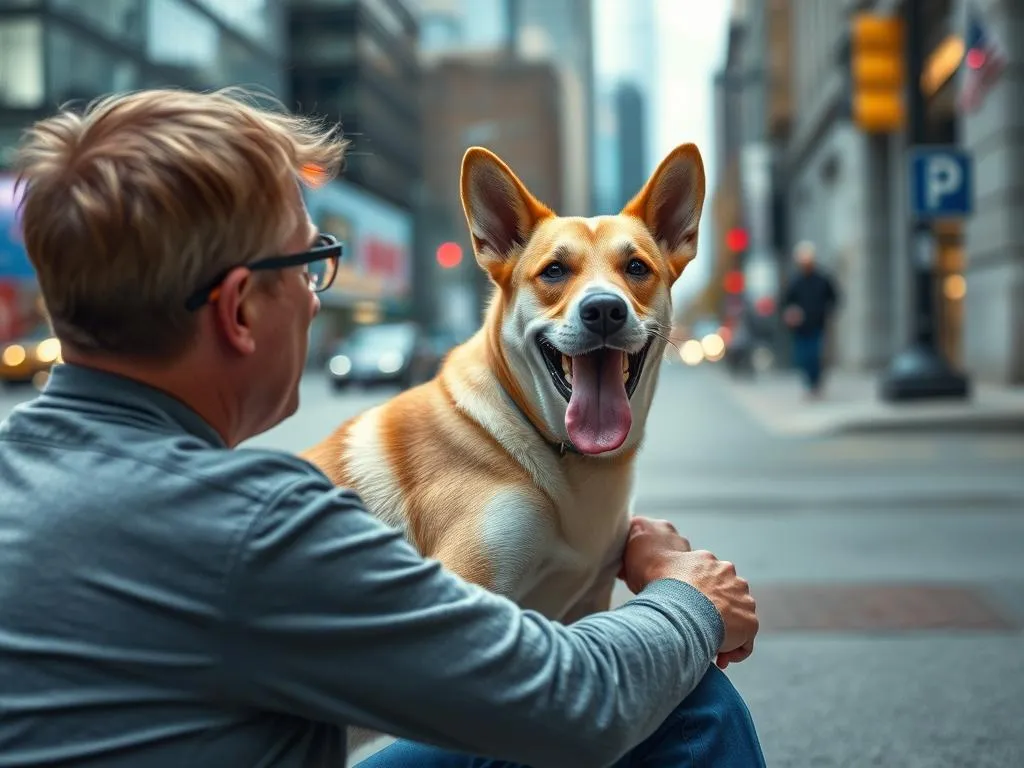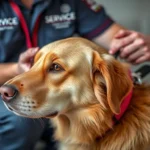
Introduction
In today’s bustling urban landscapes, the importance of effective dog training in the city cannot be overstated. While city life offers vibrant experiences for both humans and dogs, it also presents unique challenges that require specialized training methods. Urban environments are filled with distractions and stimuli that can overwhelm even the most well-behaved dogs. Therefore, understanding these challenges is crucial for city dog owners who want to ensure their furry companions thrive in this dynamic setting.
Urban dog training is not just about teaching commands; it encompasses various aspects of socialization, obedience, and adaptability. From the sounds of traffic to the presence of other dogs and people, city dogs face a myriad of potential distractions. This article will explore the specific challenges of urban dog training, essential training techniques, socialization strategies, and valuable resources to help you navigate the complexities of dog training in the city.
Understanding City Life for Dogs
The Urban Environment
City life is characterized by its unique settings, from bustling sidewalks to serene parks tucked away between skyscrapers. Dogs in cities often find themselves navigating crowded streets, encountering public transport, and enjoying limited green spaces. Breeds that adapt well to urban life typically include smaller dogs or those with moderate energy levels, such as French Bulldogs, Cavalier King Charles Spaniels, and Dachshunds. These breeds can thrive in apartments and enjoy short bursts of exercise in nearby parks.
However, dogs of all sizes can learn to adapt with proper training. The key is understanding their environment and how to effectively manage their interactions with it.
Common Challenges Faced
Urban environments come with inherent challenges that can complicate dog training in the city. The constant noise from sirens, traffic, and crowds can be overwhelming for many dogs. This sensory overload can lead to anxiety and distractibility, making training more difficult.
Additionally, limited outdoor space can hinder regular exercise and training sessions. Without sufficient room to run and play, dogs may not receive the physical stimulation they need, which can lead to behavioral issues. Socialization is another critical concern; the proximity of other dogs and people can create either positive or negative experiences, depending on how encounters are managed.
Essential Dog Training Basics
Key Training Commands
Regardless of the urban challenges, mastering basic commands is essential for urban dog training. Commands such as sit, stay, come, and heel serve as the foundation of a well-behaved dog. These commands not only enhance safety but also foster better communication between the dog and owner.
For instance, teaching your dog to sit at curbs before crossing streets is vital for their safety. A reliable recall command can prevent your dog from running into traffic or approaching unfamiliar dogs. Therefore, prioritizing these commands in your training regimen lays the groundwork for your dog’s success in the city.
The Role of Consistency and Patience
Consistency is key in any dog training in the city strategy. Establishing a routine helps your dog understand what is expected of them. Whether you’re training in the park or on the sidewalk, sticking to the same commands and signals reinforces learning.
Patience is equally important. Urban distractions can make it challenging for dogs to focus, especially in the beginning. It’s essential to remain calm and patient, gradually allowing your dog to adjust to their environment while they learn.
Training Techniques for City Dogs
Positive Reinforcement
Positive reinforcement is an effective training technique that encourages desired behaviors through rewards. In urban settings, rewards can include treats, toys, or praise. For example, if your dog successfully sits at a busy intersection, immediately rewarding them reinforces that behavior.
This method is particularly beneficial in cities where distractions abound. By associating positive experiences with good behavior, you can help your dog navigate the complexities of urban life with confidence.
Clicker Training
Clicker training is another powerful tool for dog training in the city. This method utilizes a clicker to mark desired behaviors at the exact moment they occur, followed by a reward. The sound of the clicker provides clear communication, helping the dog understand what action earned them the reward.
To implement clicker training in a busy city, start in a low-distraction environment. Gradually introduce distractions as your dog becomes more comfortable with the clicker and the associated commands. This gradual exposure will help your dog learn to focus despite the chaos of urban life.
Leash Training
Leash manners are critical for dogs living in cities. Teaching your dog to walk on a loose leash not only enhances your walks but also ensures safety in crowded areas. Start by choosing a suitable leash and harness that provides comfort and control.
Begin leash training in a quiet area. Use treats to encourage your dog to walk beside you, rewarding them when they stay close. As your dog becomes more adept at loose-leash walking, gradually introduce busier environments, reinforcing good behavior amidst distractions.
Socialization Strategies
Meeting Other Dogs
Socialization is a vital aspect of urban dog training. Introducing your dog to other dogs safely is crucial. When meeting new dogs, choose controlled environments such as dog parks or organized training classes. This allows for structured interactions where both dogs can feel secure.
Supervise the introductions closely, watching for signs of stress or discomfort. Positive experiences with other dogs will help your pup build confidence and develop good social skills, making them more adaptable in various situations.
Exposure to Crowds and Noise
One of the most significant challenges for city dogs is exposure to crowds and noise. Gradual desensitization is an effective strategy for helping your dog acclimate to these stimuli. Start with shorter outings in less crowded areas, gradually increasing exposure to busier environments as your dog becomes more comfortable.
Using treats and praise during these outings reinforces positive associations with the sights and sounds of city life. Over time, your dog will learn to remain calm and focused, even in bustling surroundings.
Building Confidence
Building confidence in urban dogs is essential for their overall well-being. Activities such as agility training, obedience classes, and exploration walks can help enhance your dog’s self-esteem. Encourage your dog to explore their surroundings, allowing them to interact with different textures, sights, and sounds.
Additionally, engage in positive reinforcement during these activities. Celebrate small victories, whether it’s navigating a crowded sidewalk or approaching a friendly stranger. By fostering a sense of accomplishment, you’ll help your dog feel more secure in their urban environment.
Finding the Right Training Resources
Professional Trainers
When seeking guidance for dog training in the city, finding a qualified professional trainer can make a significant difference. Look for trainers with experience in urban settings and a solid understanding of the unique challenges city dogs face.
During consultations, ask about their training methods, experience with various breeds, and success stories. A good trainer will be willing to answer your questions and provide you with a tailored approach to meet your dog’s specific needs.
Training Classes
Group training classes can be particularly beneficial in urban areas. Not only do they provide structured learning environments, but they also offer socialization opportunities with other dogs and people. Classes can range from puppy training to obedience and agility.
Participating in these classes helps reinforce training commands while allowing your dog to learn in a controlled setting. The presence of other dogs and distractions will prepare them for real-world interactions.
Online Resources and Communities
In addition to professional training, numerous online resources are available for dog owners. Websites, books, and forums can offer valuable insights into urban dog training techniques. Engaging with local dog training groups or clubs can also provide support and camaraderie among fellow dog owners navigating similar challenges.
Tips for Maintaining Training in the City
Daily Routine and Exercise
Establishing a structured daily routine is crucial for maintaining training consistency. Daily walks, playtime, and training sessions reinforce what your dog has learned. Incorporate exercise into your routine to ensure your dog receives adequate physical and mental stimulation.
Explore various parks and walking routes in your city to keep things fresh and engaging. This variety will help prevent boredom and ensure that your dog remains motivated during training.
Adapting Training to Urban Life
Incorporating training into your daily activities is an effective way to reinforce learning. Practice commands while commuting, running errands, or during visits to local cafes. By integrating training into everyday life, you’ll help your dog learn to focus despite the distractions of the urban environment.
Additionally, make the most of limited spaces by using your apartment or yard for short training sessions. Utilize toys and treats to create a fun and engaging atmosphere that encourages participation.
Monitoring Progress
Tracking your dog’s training progress is essential for adjusting methods and celebrating achievements. Keep a journal to note new skills, challenges faced, and milestones reached. This documentation will enable you to identify patterns and tailor your approach based on your dog’s unique learning style.
Remember to celebrate small victories, whether it’s mastering a new command or successfully navigating a busy street. Positive reinforcement for both you and your dog fosters a strong bond and motivates continued learning.
Conclusion
In summary, dog training in the city is a multifaceted endeavor that requires understanding the urban environment, implementing effective training techniques, and prioritizing socialization. By focusing on the unique challenges of city life, you can help your dog thrive amidst distractions and stimuli.
As a city dog owner, it’s essential to be proactive in your training efforts. Equip yourself with the right strategies, remain patient, and celebrate your dog’s progress. With dedication and the proper resources, you can create a well-adjusted, confident companion ready to tackle the urban jungle with you.









